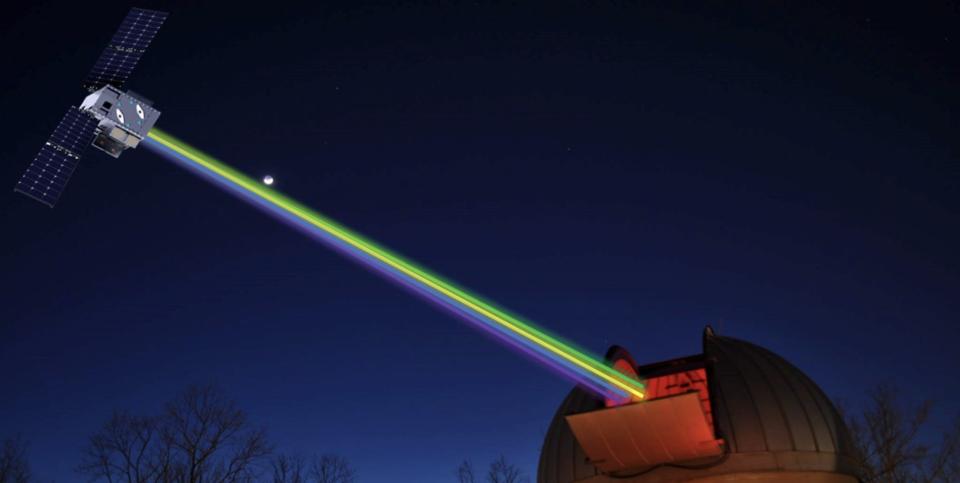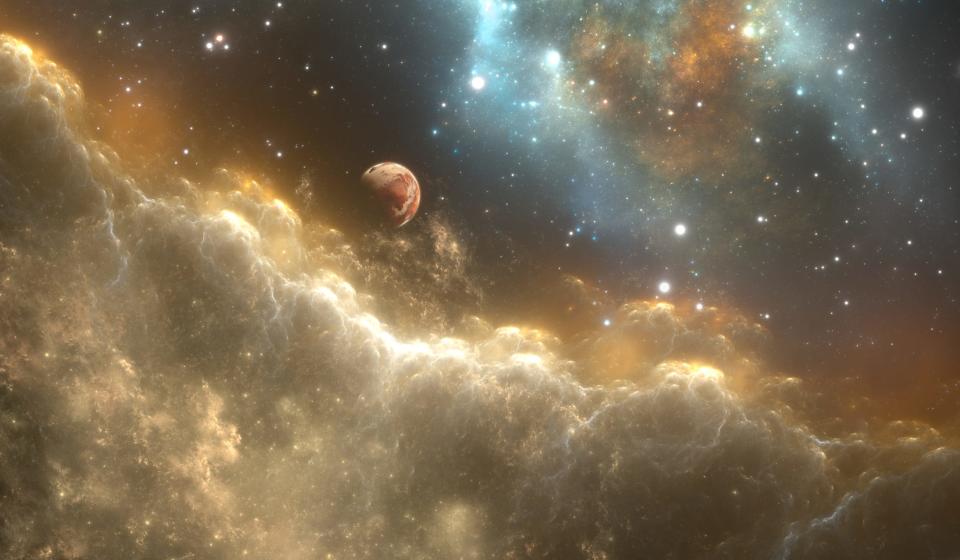NASA is putting an 'artificial star' in orbit around Earth
NASA approved the $19.5 million Landolt Space Mission to send an artificial star into Earth's orbit.
It will be the first astronomical tool of its kind that could revolutionize the way we study space.
The mission could help with studying exoplanets and the universe's expansion, among other areas.
Astronomers typically deal with the very, very large — big telescopes, giant galaxies, and massive exploding stars.
But one of the more revolutionary astronomy tools of the decade is a mini satellite about the size of a bread box. The satellite will act as an artificial star for astronomers to observe from the ground, allowing them to more accurately measure a space object's brightness and better understand some of the biggest mysteries in our universe, like dark energy.
NASA recently approved the $19.5 million Landolt Space Mission to launch the mini satellite into Earth's orbit.
"This is some really awesome science that NASA is supporting," Tyler Richey-Yowell, a postdoctoral researcher at Lowell Observatory who studies stellar astronomy and exoplanets, told Business Insider. "It's something that's going to help out all astronomers."
A revolutionary new tool for astronomers

The mini satellite, called CubeSat, is designed to orbit Earth from 22,236 miles away. At that distance, its speed will match Earth's spin so the satellite will appear fixed in the night sky and be an easy target for telescopes to track.
You won't be able to see it with the naked eye. But to telescopes, it'll look like a star. The mission is scheduled to launch in 2029. It will be the first tool of its kind.
"This is really new for us to have some sort of artificial star, quote, unquote, up there that we can go and rely on and use," Richey-Yowell told BI.
What makes this "artificial star" better than a real one is that astronomers will know exactly how much light it's emitting.
The CubeSat, named Landolt for the late astronomer Arlo Landolt, will fire lasers with a specific number of light particles, or photons, which astronomers can use to calibrate their telescopes for measuring light.
This can help eliminate a lot of the guesswork that astronomers do now when using real stars to calibrate their instruments.
The problem is that there's no way of knowing exactly how much light real stars emit, because we can't send a probe to one to accurately measure its brightness, Richey-Yowell said. Moreover, Earth's atmosphere absorbs a lot of light from space, which can also affect astronomers' calibrations.
"That's why this Landolt mission is so important," Richey-Yowell said, adding that "if we send up a mission like this one where we know exactly how many photons, how much light per second, is coming from this CubeSat," then it could be used to compare and more precisely measure the light from other objects, like real stars.
Live Science reported that the mission is expected to help astronomers measure the light emitted from stars with 10 times the accuracy of current estimates.
It's like if you were given a 1,000-piece puzzle with only half the pieces and then someone gifted you a few hundred more pieces. Landolt can help astronomers catch minute details they've otherwise been missing in the data.
How Landolt could revolutionize astronomy

"All of our astronomy is based on light, and so we really need to know how much light we are actually receiving," Richey-Yowell said.
You can learn a lot from a ray of light: a star's temperature, its mass, the types of exoplanets orbiting it and whether they could harbor life.
For example, knowing how hot a host star is can tell you how far an exoplanet must be in order to sustain liquid water on its surface, Richey-Yowell said. Water is a main ingredient of life as we know it and a key feature astrobiologists search for when scoping out potential planets that could harbor life.
Finding more Earth-like planets is just the beginning. Astronomers can also use Landolt to measure light from distant exploding stars, called supernovae, that can help calculate the expansion rate of the universe.
Right now, cosmologists studying the universe's expansion face a huge challenge: They can't settle on a single value for the expansion rate. Some methods lead to one value, while others lead to a slightly different one. This conundrum could be key to figuring out some of the biggest mysteries of the universe, like understanding the invisible force ripping our universe apart that we call dark energy.
"So really anything from small, tiny planets to the whole scale of the universe relies on our understanding of stars and how bright they are and what kind of light they're emitting," Richey-Yowell said. "I really do think it will be revolutionary for astronomy."
Read the original article on Business Insider

 Yahoo News
Yahoo News 
